‘What camera is best?’ – the only question in photography where the answer is to every person individually and changes every year. It is one of the hardest (and most popular) questions we get asked regularly.
Ultimately the best camera is the one in your hands – it’s you – the photographer that’ll make the difference. But if you’re standing at the crossroads deciding on whether to buy a new camera or not then it’s worth knowing what makes a camera ‘best’.
Firstly, we’re not going to give you a list of this month’s best cameras – by next month it’ll be superseded!
Instead, we want to layout the 10 most important camera technologies and features that you should be looking out for and how they can make your next upgrade the perfect one.
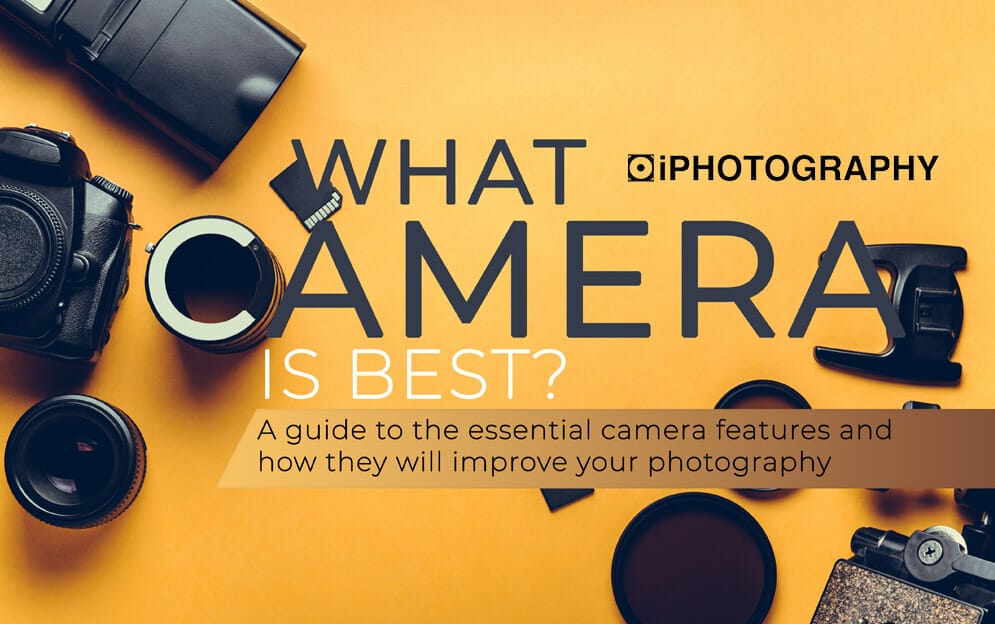
IBIS is an ever-developing technology, but it has already proven its value to on-the-go photographers.
It works by moving the camera’s sensor around the image plane using electrical actuators. If any camera shake is picked by the accelerometers, it calculates the direction and speed to move the sensor, so it remains stationary in relation to the image being projected by the lens.
Choosing a camera with IBIS (and even a lens with image stabilisation) will give you a greater ability to handhold your cameras at slower shutter speeds. If you do not like lugging a tripod around when shooting landscapes or at night-time, then choosing a camera with IBIS would be ideal. You can use it more regularly with telephoto lenses too which normally struggle for sharpness at full distance.
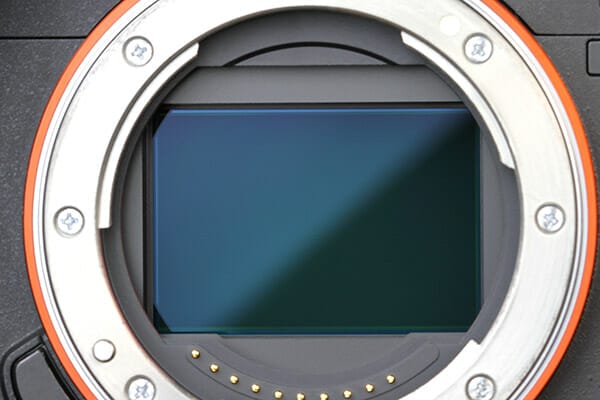
When looking at what camera is best it’s not only the size of the senor that makes a difference, but also the technology that runs it.
The most common sensor types are:
• CCD (charged coupled device)
• CMOS (complementary metal-oxide–semiconductor)
CCD sensors are from older technologies but offer superior image quality compared to CMOS sensors. Generally seen to have improved dynamic range and noise control. CCD sensors aren’t as common anymore due to its large consumption of battery power; many camera brands have moved on to replace them with CMOS sensors instead.
Despite being the black sheep of the sensor family CMOS sensors have been continually improved to now match the quality of its predecessor. They have much more functionality, they work more efficiently, require less power, and perform better in burst modes.
Foveon X3 sensor, used in Sigma compact and DSLRs supposedly offer the image quality of a CCD sensor but with the lower power consumption of a CMOS.
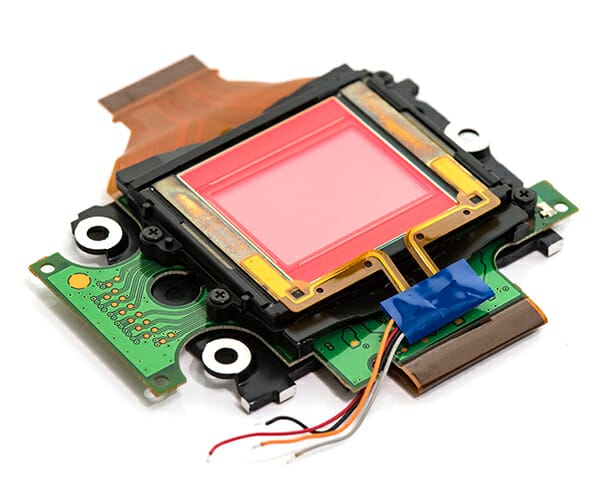
APS-H (Advanced Photo System – High Definition) is the most common type of sensor that you’ll come across when deciding what camera is best. The APS-H type combines a large sensor (but not full frame) with a decent pixel count to boost speed and ISO performance. It carries a 1.3x crop factor to lenses.
(Advanced Photo System – Classic). These are the slightly smaller brother of APS-H sensors and capture images at a 3:2 ratio, unlike the APS-H’s full frame ratio.
They are also different in the fact that, unlike APS-H, not all APS-C sensors are equal in size.
Here is an example.
Canon APS-C sensor = 22.2mm x 14.8mm
Sony, Fuji & Pentax cameras range from 23.5mm x 15.6mm to 23.7mm x 15.6mm.
Ricoh APS-C sensor = 23.7mm x 15.7mm
Yes, seriously Wi-Fi is an important consideration when deciding what camera is best for you. Think about it – having built-in Wi-Fi to your camera gives you the ability to hook it up to a tablet or smartphone and transfer your images immediately.
You’re not beholden to your desk or home – you can shoot freely and with the same confidence of back up.
You don’t have to be at home or sat a desktop computer. Transferring images frees up your memory card to go out shooting again if you’re travelling. It also means you can edit them on your device and get them posted online faster.
The only downside is that it can cost you battery life to transfer lots of images (especially RAW files).
If you prefer the old school method of transferring, then get yourself a memory card adaptor compatible with your device and transfer them that way.
Shooting in JPEG format will make it easier for you to edit on the go with most apps.
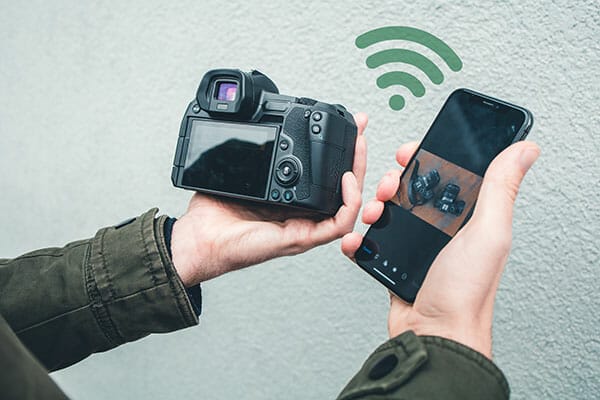
This is not an age thing I promise you but having an articulating/tilting screen when figuring out what camera is best for you will save your back hours of aching!
Angles are everything in photography and the ability to move your camera in to dynamic positions isn’t always possible without knowing if you’ve got everything in the frame correctly.
A swivelling screen will help you see what your camera sees without your eye being glued to the viewfinder.
Fully articulating screens are best, ones that flip out and have a full rotation to help you see from below, stood above and even take a few selfies!
Honestly articulating screens are the technology we never knew we needed with cameras years ago, but now we’ve got them we would struggle to operate without.
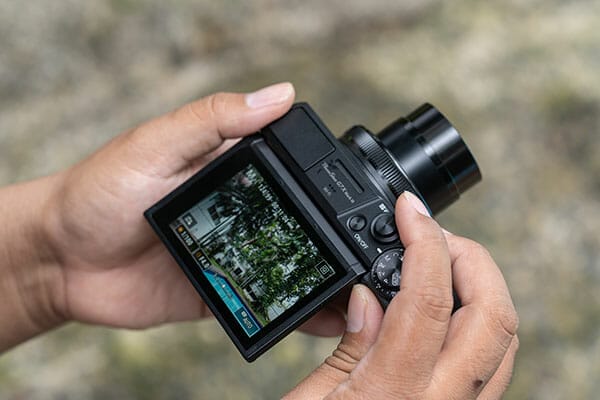
Despite praising the advantages of tilting screens, the old school viewfinder is a precious commodity that some cameras don’t carry anymore. Viewfinders can be either optically or electronically operated – also referred to as OVF and EVF respectively.
OVF’s are the traditional viewfinders where you see a real-time view of your shot made possibly by the camera’s mirrored pentaprism. EVF’s are basically a little monitor in the viewfinder of your scene. They require more battery power but can apply filters in real-time so you can see your finished shot more closely.
Some cameras carry the option to switch between OVF and EVF, others will just have one.

To know why it’s helpful when deciding on what camera is best for you, its important to see the problem of Live View LCD screens.
LCD screens maybe bigger but are susceptible to bright lights and reflection rendering them almost impossible to see under bright sunshine.
Of course, you can increase the brightness of your LCD but then that gives you a false impression of your actual photo – it won’t be as bright as the screen displays. Viewfinders allow you to get up close without light interruptions and see the image with no surrounding distractions.
Close one eye and your entire view will be your frame which allows you to concentrate and assess the moment faster and you won’t have to second guess what the outcome looks like.

What is truly best when selecting what camera is best? One with a mirror (DSLRs) or without (Mirrorless)? Let’s make this super simple with a quick comparison for you to decide on your needs.
OVF (Optical Viewfinder)
Larger & Heavier
Better Autofocus for Action
Stronger in Low Light
Better Battery Life
Wide Lens Choice
EVF (Electronic Viewfinder – sometimes OVF available)
Smaller & Lightweight
Improving Autofocus ability
Better LCD Screen Quality
Stronger for Video Capture
Faster Frame Bursts
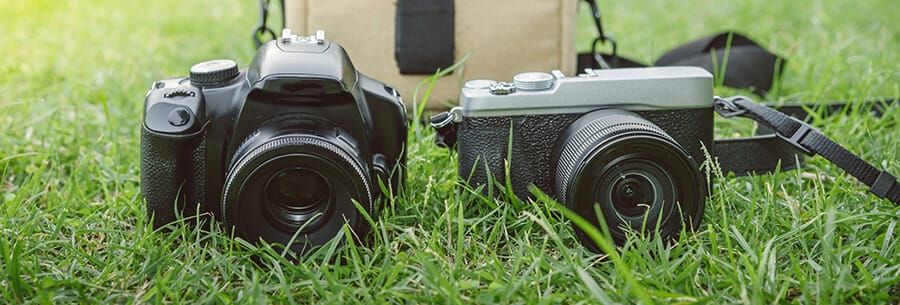
Seeking out the battery life information when picking out what camera is best is one of the first things we’d recommend.
Of course, you can always buy more batteries and even battery grips to carry more power with you, but that’s only going to add to the bulk and weight of your kit. If you like to keep your shooting light and compact, then get a camera with a decent battery life.
The smaller the camera the smaller the battery life but there are some great cameras out there that pack a decent power pack without being bulky. DSLR’s will offer more power over smaller camera forms but being able to get 400+ images out of a battery is a good benchmark.
If you’re shooting more than 400 images in a day (and you’re not a wedding photographer) then you’re going to be in for a long editing session!
1. EVF – electronic viewfinders suck power like a vampire.
2. Increasing LCD brightness.
3. Using the flash.
4. WiFi / Bluetooth (turn it off until you need it).
5. Shooting in burst modes.
6. Cold weather – low temperatures can reduce battery life by up to 50% in severe conditions.
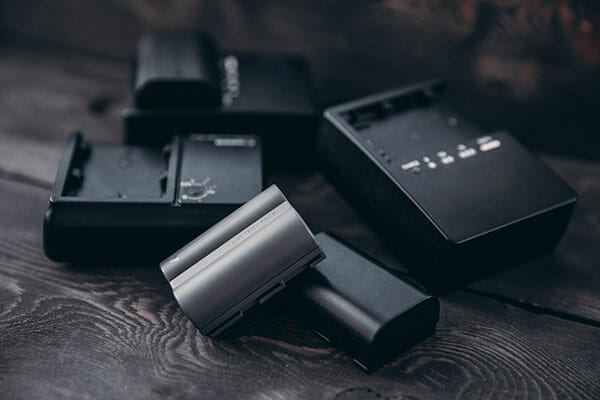
You may have heard of BBF (back button focus) but your camera may not have that function and wonder – what is it? And is it worth it when thinking about what camera is best for you next?
BBF is an alternative way to lock focus on your shot. Typically half-pressing the shutter button locks the focus in most cameras but BBF splits up the job and employs your thumb, on the rear of the camera body, to take charge of focus so your shutter is only pressed to take the shot.

It stops you from accidentally slipping when half-pressing and taking the shot too early. It’s not only an insurance feature but also offers a hybrid focus mode. When you’re holding the BBF the camera will continually focus on your subject as it moves. If you lift your finger off it the focus will stop and re-target when you next press it – meaning the BBF adapts to your shooting method.
There is an argument as to whether this improves sharpness, but it certainly improves workflow and allows a more natural connection between the camera body and your hands.
The dynamic range of a camera is set by the contrast between the highest and lowest luminance that can be produced.
The dynamic range is expressed as a ratio. Every F-stop equals a doubling of the contrast. Therefore, a dynamic range of 10 F-stops equals a contrast of 1000:1.
When deciding on what camera is best then look for this ratio expression in specifications. The higher the ratio the wider the dynamic range. Obviously shooting in optimal conditions and using the right camera settings to expose your image correctly will set you up to achieve the best dynamic range.
The cameras with top-end performance on dynamic generally have a ratio of 1500:1 but anything above 1200:1 is considered impressive.
You can check your camera’s current dynamic range score here.
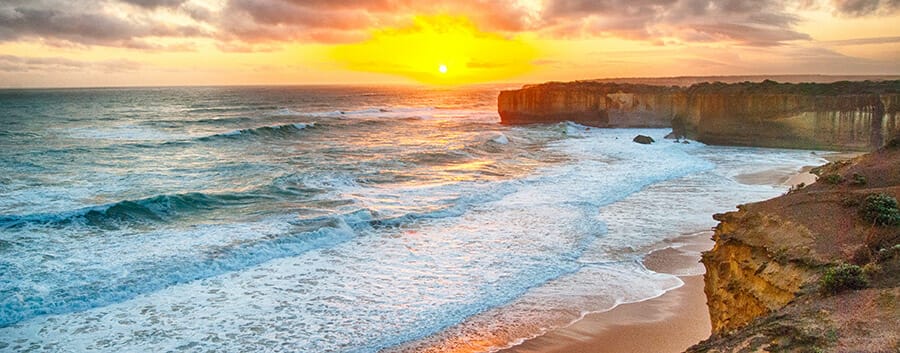
If you’re anything like us, we never want to go home when we find a great location to shoot. But sometimes our memory card dictates when the day is done – but NOT if you have dual card slots!
Currently bigger DSLRs are where you’re going to encounter dual card slots but that will change as technology gets smarter.
“But why not just get a bigger memory card for one slot?” Sounds logical, but in practicality there are dangers.
Imagine that card corrupting at some point and you losing 1,000 images all in one go. Is that logical? While it may be rare, the danger still lurks.
Dual card slots can offer you the ability to shoot RAWS to one and JPEGs to the other meaning you split the danger and still have backups. Or otherwise see it as more capacity shoot overall. Professional photographers live for dual card slots, wedding and commercial photographers will find them useful too. You may not need them in the early days of your hobby, but they can be useful going forward.
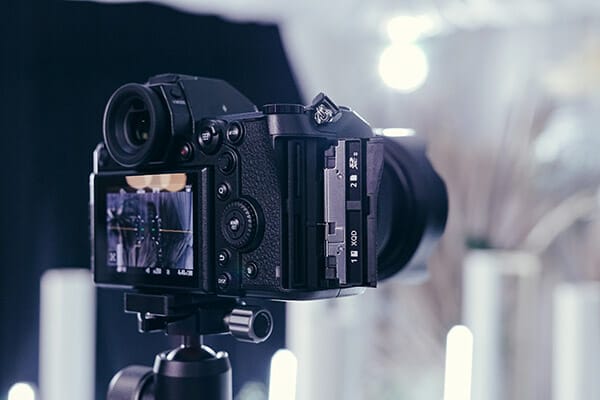
In conclusion we hope this guide will help you decide what the best camera is for your style of photography. It may just have informed you what to look out for when making that inevitable upgrade, or it may have cemented the idea that the camera you’ve already got is the only one you need.
Either way, we’d love to hear your thoughts on this guide. Get in touch and let us know.
Discover the BEST way on how to clean a camera sensor using swaps, rocket blowers and pencil brushes to give your shots a dust-free finish!
Capture the magic of the night with our beginner’s guide to night photography. Learn tips and techniques for stunning results.
Master the art of solar eclipse photography with expert tips on equipment, settings, and precautions for stunning celestial images.
Learn the basics of photography – fast – with our FREE 60-Second Photographer online course. Each class is short and sharp with simple, actionable steps that give you immediate results.
x 30 lessons

© iPhotography™
Become a confident and competent photographer in less than 30 minutes!
Before you leave, make sure you’ve secured your FREE online photography course (worth £29.99)
Each class is just 60-seconds or less making it the fastest and easiest way to learn photography!